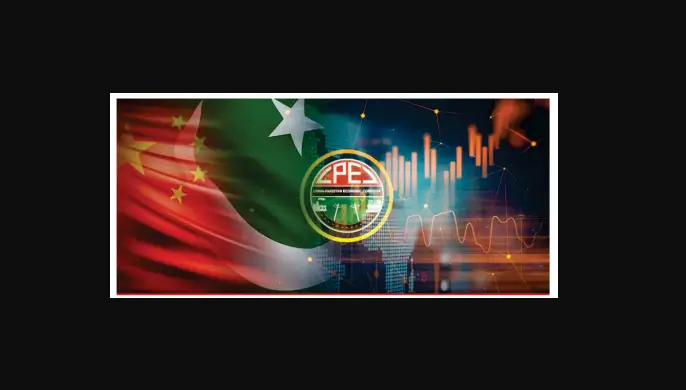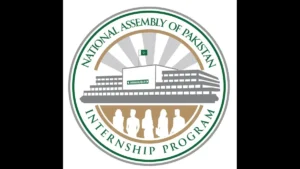CPEC & BRI 2024 and Beyond.
CPEC: Pakistan’s Elite Model’s Hidden Engine of Progress?
Pakistan’s elite-oriented economic model has long faced scrutiny, but could the China-Pakistan Economic Corridor (CPEC) be its hidden engine of progress?
While skyrocketing inflation and rising poverty paint a bleak picture, CPEC promises a brighter future. Its numerous mega projects aim for socio-economic development, potentially reducing unemployment and offering hope to many struggling Pakistanis.
Read More: Chinese Vice-FM Arrives for CPEC Meeting
SIFC and CPEC: A Match Made in Development Heaven?
The formation of the Special Investment Facilitation Council (SIFC) is greasing the wheels of foreign investment, and its synergy with CPEC could be transformative.
Imagine a streamlined system where CPEC projects seamlessly navigate bureaucratic hurdles, attracting further investment and accelerating progress.
Concrete Progress in 2023: From Gwadar’s Rise to Balochistan’s Bloom
2023 wasn’t just talk; it was action. 36 CPEC projects, worth a staggering US$24 billion, have been completed. 22 more, valued at US$5 billion, are underway, and negotiations for a further US$27 billion are active.
Balochistan, often marginalized, is finally seeing its share of the pie, with 27 projects dedicated to its development in full swing.
Read More: Top Tourist Places to Visit in Gwadar
Gwadar city and its port are shining examples of CPEC’s potential. The completed East Expressway and first phase of the Gwadar Free Zone pave the way for future prosperity. Social development hasn’t been forgotten, with projects like the China-Pakistan Vocational and Technical Institute and the 1.2 MGD desalination plant already impacting lives.
Balochistan Blossoming: From Hospitals to Solar Lights
The 300-bed Pak-China Friendship Hospital nearing completion is just one testament to CPEC’s commitment to healthcare. The Joint Horticulture Laboratory and distribution of solar lighting units are empowering communities, while the 20-bed burn center and medical emergency center offer vital help. The Bostan Economic Zone, with its completed Phase-1, promises further economic empowerment.
Mega Projects in the Pipeline: A Brighter Future Beckons
The ML-I project and other mega deals signed during the recent visit to China hold immense potential. Their completion could significantly improve Pakistan’s macro-economy, creating jobs, boosting trade, and offering a beacon of hope for a brighter future.
The Belt and Road Initiative (BRI) is rapidly reshaping lives in the Middle East. In Saudi Arabia and the United Arab Emirates, Chinese-made intelligent logistics robots are bringing transformative changes to states, societies, and systems.
Chinese-built robots in Dubai patrol malls and tourist spots, injecting fresh impetus into the region’s economic diversification goals. The BRI’s future focus appears to be on digitalization, qualitative industrialization, technological innovation, and green energy.
Prioritizing high-quality and sustainable development aims to counter disruptions in global supply chains due to US-China tensions. With over 3,000 completed projects in the last decade, the BRI’s strategic importance is set to grow, fostering global cooperation for shared future development.
In Saudi Arabia, leading Chinese AI enterprises, marking the BRI’s first decade, plan to strengthen tech ties, exemplified by SenseTime’s partnership with Saudi Company for Artificial Intelligence (SCAI) to establish a cutting-edge AI lab.
The lab aims to train local high-end AI talents, boosting Saudi Arabia’s AI-tech ecosystem across various sectors like digital infrastructure, smart cities, tourism, industrial parks, healthcare, and autonomous driving.
China Drives Green Growth into BRI’s Second Decade
As the “Belt and Road Initiative” (BRI) enters its second decade, a green shift takes center stage. President Xi Jinping’s recent roadmap emphasizes sustainability, technological collaboration, and digitalization as key drivers for member countries.
Europe Gets EV Boost: Hungary welcomes BYD’s first European electric vehicle (EV) factory, cementing BRI’s green focus. This follows Hungary’s early commitment to the initiative in 2015, signaling potential for deepened partnerships across the continent.
Green Finance Fuels Sustainability: China pledges active implementation of the Green Investment Principles for the BRI, focusing on renewable energy financing and sustainable infrastructure. This ambition positions BRI as a potential catalyst for global decarbonization, particularly in developing economies.
Southeast Asia Catches the Wind: Chinese firms like PowerChina are actively supporting Southeast Asia’s green transformation. Their recent joint venture with a Thai company to build the region’s largest wind power project demonstrates BRI’s concrete impact on clean energy infrastructure.
Economic Boom Projected: Official estimates predict a staggering $7.1 trillion annual boost to global GDP by 2040, a 4.2% increase, thanks to BRI’s projected growth. This economic potential underscores the initiative’s potential to contribute to global modernization, particularly for developing countries.
Shared Future on the Horizon: BRI’s ultimate goal remains building a “global community of shared future.” By fostering cooperation and joint governance among member countries, the initiative seeks to create a balanced and inclusive approach to modernization.
Adaptation for a Changing World: Recognizing the evolving global landscape, BRI is ready to adapt. The initiative recognizes the need to address rising economic uncertainties, supply chain disruptions, and growing divisions in the coming years.
A Long March Continues: As BRI embarks on its second decade, it’s crucial to remember its long-term vision. Akin to a “long march,” the initiative’s success hinges on a systematic, large-scale, and sustained approach.
The year 2024 presents a new starting point for high-quality BRI cooperation, fostering a global community of shared future.
Note: The information above might not be accepted 100%. Please verify from your own sources. We will not be responsible for any kind of loss due to our content.
For more news, please visit Munafa Marketing.




